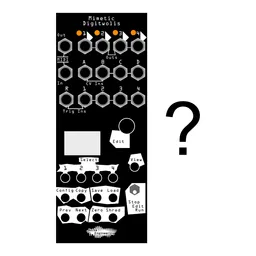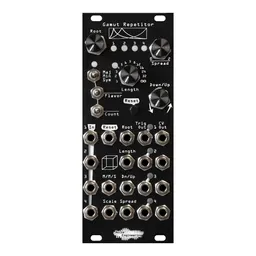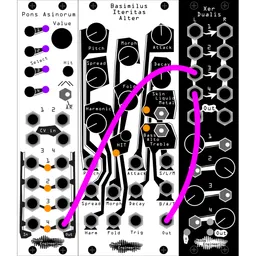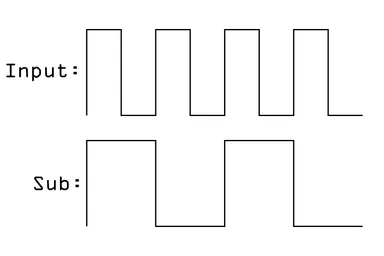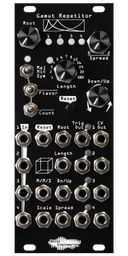Recently, Robotopsy Robotopsy posted a fantastic video showing off a bunch of patches using the Alia oscillators. In that video, he also showed a cool patch using the Gamut Repetitor as a glitchy oscillator. In this post, we’ll explore how the patch works, and expand on a few of the concepts used in the video.
The concept: audio-rate clocking
By patching a square-wave oscillator to one of the trigger inputs on Gamut Repetitor, its CV outputs will create a fun stepped/square-ish output, which results in a glitchy, chiptune-esq wave. By sequencing the pitch of the driving oscillator, you can play melodic lines and patterns, and the Gamut will follow along. This patch will work best for bass sounds – the Gamut Repetitor will tap out around 500hz – but the results are quite unique. Check out the sounds in this excerpt from Robotopsy Robotopsy’s video around 1:13:
Adjusting the various parameters on Gamut will change the resulting timbre of the oscillation, sort of similar to a wavetable oscillator. Turning Length all the way up will create semi-pitched noise, and turning it down will create more distinctive pitches.
Expanding the patch
As shown in the video, Spread affects the level of the oscillation from Gamut. We can use this to great effect as a fake VCA for level control of the resulting oscillator.
By simply patching the gate output of your sequencer to the Spread CV input and turning spread to minimum, you can mute and unmute the oscillator with your sequencer for an easy-to-control voice.
You could also patch an envelope generator to Spread for a bit more dynamic control. The level shift that comes from adjusting Spread isn’t exactly linear, but it’s close enough to get some interesting results.
Have you found a great way to use a Noise Engineering module “wrong”? Drop us a line or tag us in a post on socials so we can check it out!
